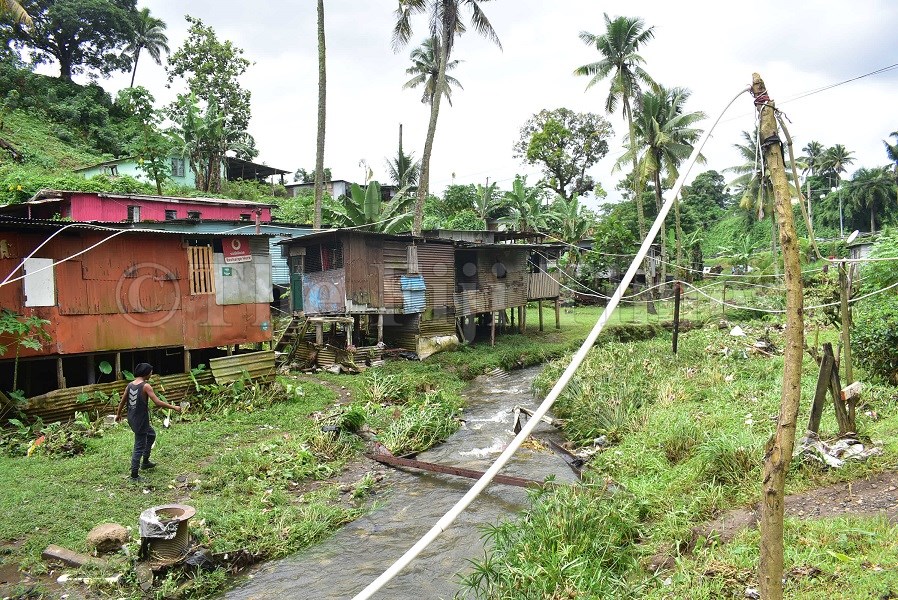Informal settlements, often referred to as squatter settlements or shantytowns, exist in various parts of Fiji.
These settlements typically consist of makeshift homes constructed from scavenged materials such as corrugated metal, wood and plastic. Informal settlements in Fiji face numerous challenges, including overcrowding, a lack of basic infrastructure, and limited access to essential services.
The Fiji Government, along with NGOs and international organisations, has initiated programs to address the challenges faced by informal settlements.
These programs aim to improve housing conditions, provide access to basic services and regularise land tenure where possible.
A recent report by Robert Bosch Stiftung, Conciliation Resources and the Pacific Centre for Peacebuilding, titled Resilience and Social Cohesion in Fiji’s Climate-Affected Informal Settlements, examined among other issues the prevalence of crime in three major informal settlements of Qauia, Maravu and Nanuku in Suva.
The findings of this case study demonstrate that in informal settlements, violence comes in many forms.
Together with a sense of social and economic exclusion from the larger city, a strong sense of insecurity pervades the settlements. Vanua, the land, is an extension of the self and identity in indigenous Fijian society.
Custom, tradition, spiritual practices, cultural beliefs and values and social institutions that promote cohesion are all disrupted by rural-to-urban migration.
“Gender-based violence is widespread, with nearly two-thirds of women aged 18-64 reporting experiences of abuse by their husband or partner. If migration involves members of the man’s side of the clan/family, as is often the case, this might also skew gender relations in the household, with a woman suddenly being surrounded by her husband’s family, not having access to family networks that might allow her to protect herself and her children from gender-based violence,” the report said.
It noted that closely linked to criminal activity is a larger intergenerational conflict that feeds into tensions between new arrivals and established inhabitants, and adds to the general sense of insecurity.
“Many residents are especially fearful for the safety of their children, who might be caught up in violence or succumb to criminal activity themselves.
“Drug use and drunkenness in public, loitering, disregard of elders, and fighting between youths are the most commonly cited transgressions.
“The so-called ‘newcomers’, especially the youth of newlyarrived residents, are seen to not adhere to community rules and regulations. Lack of respect for traditional authority and custom by young people has frequently been decried.
“However, the same youths who are accused of disregarding community regulations and custom in the settlements will also follow customary regulations and even customary obligations in their villages. In the relative anonymity of the settlements and removed from familial networks, social sanctions are laxer or completely absent.
“While outright fighting between youth groups is rare, fist fights between youths, especially under the influence of drugs and alcohol, are commonplace.”
The report stated traditional leaders and traditional conflict resolution mechanisms play a key role in mediating community and family conflict.
“The recreation of village social structure in the settlements also defers considerable power and responsibilities onto the local chief, effectively the key social and political authority in the settlements.
“Conflict resolution in the settlements is predicated on the understanding that the individual is bound up in communal relations. To resolve conflict, such communal relations need to be restored.
“Typically, this involves a kind of shuttle diplomacy by an elder or religious or community leader in which grievances on both sides are heard. Once the parties agree to meet formally, the setting of that meeting is highly ritualistic, and often involves kava ceremonies as well as the use of a whale’s tooth (tabua), a rare item that traditionally is given as a symbol of atonement.”
The report stated these kinds of humble apologies have to be formally accepted.
“Depending on the grievance, reparations often in the form of money are negotiated, and, if both sides agree, parties are brought together in a reconciliatory ritual.
“When community dialogue fails, however, village elders noted that police are often involved. It is unclear to what degree family disputes, and potentially family violence, are being hidden through these community-based justice mechanisms, as the importance of communal relations seems to be held over the interests of the individual.”
According to the report, religious institutions play a key role in maintaining social order in the settlements.
“Youth groups are often organised through churches to involve troubled youths in an array of activities. Church leaders, together with other community leaders, form youth committees. These networks also function as conflict prevention and resolution mechanisms, as youth leaders are the first to respond to violence between youths.”
The report concluded churches and religious institutions often fill the gap in service delivery when government services fail or are absent in the settlements.
“They are central to social cohesion within the settlements and thereby also play a pivotal role in both conflict management and climate change mitigation and response.
“Churches collect money for the development and upkeep of local infrastructure and contribute a spiritual dimension to the climate response, forging communities together through common beliefs and rituals. Besides religious services, they organise sports events and activities, play a key role in uniting communities, and keep youths from crime and violence.
“Sports activities organised by churches and the Ministry of Youth keep unemployed youths, especially young men, off the streets. Sports camps often extend into teaching life and job skills.”



